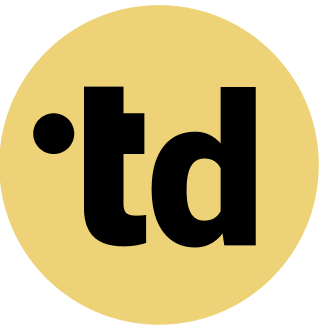Key Takeaways
A Human in the Loop Team keeps people central to AI processes, boosting high-value work by 65 percent and satisfaction by 49 percent.
Role clarity is the foundation of success, as ambiguity is blamed for inefficiency by 40 percent of employees and costs German firms €9 billion yearly in burnout-related productivity loss.
Designing hybrid human-AI roles requires a structured approach, focusing on outcomes, interaction protocols, and feedback loops to build trust and effectiveness.
Teams are the heroes of every organization, but they face a relentless villain: chaos. A stunning 40 percent of employees blame unclear roles for inefficiency, a problem now amplified by AI integration. This ambiguity fuels burnout, costing German companies nine billion euros annually in lost productivity alone. But a new strategy is emerging. The Human in the Loop Team model combines human creativity with AI's power, creating a hybrid force for clarity and flow. This is the hero's journey for today's Team Architects, and teamdecoder is the guide to making it happen.
Practical Framework for Team Architects
As a Team Architect, you can apply these principles to your organization:
- Map Current State: Document existing roles and responsibilities using a tool like teamdecoder.
- Identify Gaps: Where are roles unclear? Where do humans and AI agents overlap?
- Define Clear Boundaries: Specify which tasks are handled by humans vs. AI agents.
- Create Accountability: Assign clear decision rights for each role.
- Iterate and Improve: Continuously refine based on team feedback.
Confronting the Chaos: The Real Cost of Unclear Roles
Organizational drag begins with ambiguity. When roles are poorly defined, decision-making stalls and productivity plummets by over 25 percent in some teams. This confusion isn't just inefficient; it's expensive. In Germany, the average employee turnover rate hit a staggering 33.2 percent in 2022, driven by burnout and dissatisfaction. Many leaders overlook that this level of churn can cost over 100 percent of the departing employee's annual salary to resolve. The lack of clear roles and responsibilities is a primary stressor, directly impacting your bottom line. This environment makes integrating new tools, especially AI, nearly impossible.
A New Hybrid Model: Why Sweet Teams Are Made of This
A Human in the Loop Team keeps people at the center of AI-driven processes. This isn't about replacing people; it's about augmenting them. In fact, executives see human involvement in AI workflows as a net positive. Effective Human-AI Teaming leads to a many increase in time spent on high-value tasks. This hybrid model boosts creativity by and employee satisfaction by . The key is shifting from AI as a tool to AI as a teammate, which requires a total rethink of team structures. Seventy percent of organizations believe AI agents will demand significant organizational restructuring. This new dynamic is the future of high-performance work.
Make Bots and Humans Click: The Architect's Playbook
Building a successful hybrid team (humans and AI agents) requires a deliberate design, not a default setting. Trust in fully autonomous AI has dropped from to just some in one year, showing that human oversight is critical. For Team Architects, the focus must be on creating clarity in this new landscape. Over many German employees say a sense of purpose is a key reason for staying with a company. Clear roles provide that purpose. Here is how to start designing your hybrid team:
- Map Outcomes, Not Just Tasks: Define what the team must achieve, then assign roles to humans and AI based on strengths.
- Define Interaction Protocols: Clarify when and how AI provides suggestions and when humans must make the final call.
- Establish Data Governance: Ensure everyone knows how AI uses data, a concern for most European workers.
- Create Feedback Loops: Implement processes for humans to correct and train the AI, improving its performance over time.
This structured approach to AI-powered role analysis ensures technology serves the team's goals.
Architect Insight: From Overload to Flow
Our Playful Tip: Start every role definition with a simple question: "What unique value does a human bring to this process?" This keeps the focus on creativity and critical thinking. For a deeper approach, Team Architects can use frameworks to operationalize strategy in hybrid teams. A Fraunhofer report notes that data-driven workplace optimization is essential for success. You can try teamdecoder for free to see how our platform makes this easy. A clear system for managing roles and responsibilities is the foundation of new leadership in the age of AI. For more transparency on our plans, you can check our pricing page.
Deep Dive: For a customer service team, you can assign an AI agent to handle initial queries and data gathering 24/7. The AI can then escalate complex issues to a human agent with a complete summary. This frees up the human team member to focus on high-empathy problem-solving, a move that can boost productivity by . This clear division of labor is a hallmark of effective human-machine teams.
Real-World Results: Before and After Team Decoding
Companies like a cosmetics manufacturer and the a hospitality organization have already transformed their teams by focusing on role clarity. While every journey is unique, the results follow a clear pattern. Here is a typical transformation for a team adopting a Human in the Loop structure:
Metric Before (Chaos) After (Clarity) Decision-Making Speed Days, multiple meetings Hours, clear ownership Role Overlap some tasks duplicated Less than five percent overlap Employee Engagement Low, high burnout risk increase in satisfaction AI Integration Ad-hoc, causing confusion Structured, boosting productivity
This clarity in organizational development is not just about efficiency; it is about building a more resilient and motivated workforce. The right AI role assistant makes this transition seamless.
Teams Just Wanna Have Fun: The ROI of Clarity
When teams have fun, it means the friction is gone. Clarity eliminates the stress of ambiguity, which is a top driver of workplace anxiety. This directly impacts performance, as Germans believe AI can improve their work conditions by removing repetitive tasks. The result is a more sustainable and innovative culture. By 2030, Europe may face job transitions due to technology, making adaptable team structures essential for survival and growth. Investing in clear roles for your Human in the Loop Team is the most direct path to navigating this transformation successfully. It is time to make change feel like play.
Try teamdecoder for free - shape your team and make change feel like play!
#TeamArchitecture #HybridTeam #HumanInTheLoop #OrganizationalDevelopment
More Links
Humboldt Institute for Internet and Society (HIIG) describes a project focused on the 'Human-in-the-Loop' concept.
German Aerospace Center (DLR) focuses on research into human-AI collaboration within the LOKI project.
Transformationsagentur RLP provides a document discussing human-machine collaboration with a focus on artificial intelligence.
Federal Statistical Office of Germany (Destatis) offers a press release likely containing statistics related to AI or related topics.
Federal Institute for Occupational Safety and Health (BAUA) provides a publication search form related to artificial intelligence and digitization in the workplace.
Fraunhofer IAO describes research on AI ultra-transformation processes for AI implementation in companies, focusing on human-technology interaction.
Fraunhofer IAO also offers a scenario report likely related to digitization, AI, or future technologies.
FAQ
How do I start building a Human in the Loop Team?
Start by mapping your team's key outcomes. Then, define which tasks are best for AI (e.g., data processing, repetitive communication) and which require human skills (e.g., empathy, strategy, final judgment). Use a tool like teamdecoder to visualize and manage these new roles.
Can this model work for small businesses?
Yes. The principles of role clarity and augmenting human skills with technology apply to teams of any size. For startups and small businesses, using AI to handle operational tasks allows a small team to have a much larger impact.
What is the biggest challenge in creating a hybrid team (humans and AI agents)?
The biggest challenge is managing the change and ensuring clear roles. Without a deliberate design, you risk confusion, low adoption of AI tools, and declining trust. A recent study identified nine common challenges, most related to a lack of structured implementation.
How do you measure the success of a Human in the Loop Team?
Success can be measured with both performance and people metrics. Track KPIs like decision speed, project completion rates, and error reduction. Also, measure employee engagement, satisfaction scores, and burnout rates, as these are expected to improve.
Is a Human in the Loop Team the same as a hybrid team?
The term 'hybrid team' often refers to remote and in-office work. A 'Human in the Loop Team' specifically describes a hybrid of humans and artificial intelligence working together, focusing on the structure of roles and responsibilities between them.
Where can I learn more about your pricing?
We believe in transparency. You can find complete details about our free and paid plans on our pricing page: https://app.teamdecoder.com/pricing/





